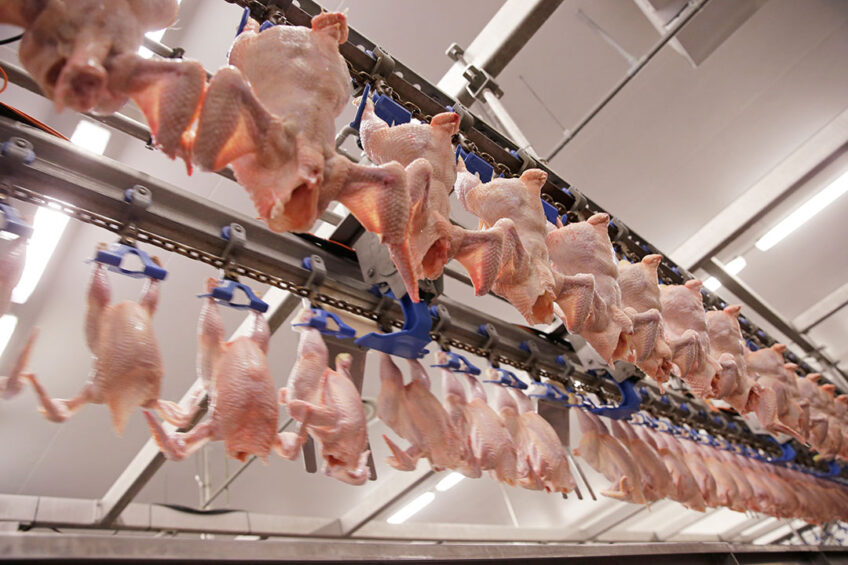Poultry carcass data helps to fine-tune diets

The internal and external conditions of a poultry carcass represent the quality of the meat, along with bird health and welfare. Carcass data also helps to fine-tune mineral nutrition.
The delicate balance between managing high-performing breeds while dealing with higher production costs and labour issues across the poultry chain is complex, and something that can easily lead to increased levels of carcass defects, downgrading and condemnation. This can – and must – be prevented, considering that poultry carcass defects already cost the global broiler industry billions of dollars in economic losses. This means that the fast-growing birds must be properly managed during their time on the farm to ensure that health, welfare and meat quality are not compromised.
If density levels are too high, this can lead to skin scratches, and if biosecurity or disease prevention are below par, the carcass can become contaminated with foodborne or other pathogens, such as E. coli, Campylobacter or Salmonella. But lesions may also be formed due to inefficient or inadequate harvesting techniques or trauma points during processing.
No standard scoring system
Carcass evaluation procedures at processing plants do not all look closely at all the external and internal lesions that are important to score.
Dr Paco Fernández López-Brea, global poultry business development manager at animal nutrition company Zinpro explains: “Financially speaking, it is in the slaughterhouse where the most money is made. At the same time, there is not a lot of focus on proper lesion scoring and trying to find out why and where they are formed. Anything we can improve here in terms of creating insightful data from the carcass and the associated costs will be extremely helpful to improve every step of the production process, from both an economic and an animal welfare perspective.”
Over the years, Zinpro has gathered a lot of carcass quality data and fine-tuned their scoring system and the processes around it, supplemented with scoring cards and visuals. This has led to a new tool that evaluates lesion scores and estimates the economic impact of those lesions in a poultry production operation.
“But maybe more importantly, our ‘forensic approach’ helps to identify production and processing challenges. This is because we take a deep dive to examine both external and internal lesions to find out where and why they happened, and hence determine a course of action. This is important to get a complete picture, as some internal lesions can have a bigger economic impact than external lesions. We bring new information to the table and we are the first company to do it this way,” Fernández explains.
Better teamwork and alignment
The new tool provides meaningful carcass data but also brings together different areas of expertise, such as quality managers, processing plant managers, financial managers, flock managers or supervisors, poultry nutritionists and veterinarians.
“And this is important,” says Satish Soni, poultry account manager at Zinpro for Central America, Mexico, and the Caribbean. He continues: “The tool consists of a preparatory stage, the actual lesion scoring in the plant, followed by a report and action plan. The results and evaluations from the data collection are turned into a report that describes the lesions found, the financial impact and potential areas for improvement around management and poultry nutrition, followed by a course of action. For example, in follow-up audits we can look at the differences between groups, for example males versus females, different density levels, or compare birds with a zinc supplement versus no supplement given.”
The frequency of the audits is up to the company. One of Zinpro’s clients in Europe has 4 processing sites and has asked for a visit to these 3 times a year. “The information they now have is extremely valuable because it enables them to compare their locations and identify where there are opportunities to improve,” says Soni.
Linking carcass data with nutrition
The tool helps to connect the dots between flock health and welfare pre-mortem and carcass quality post-mortem. Broiler nutrition is one of the cornerstones of performance, along with gut health and overall resilience and, therefore, has a strong correlation with carcass quality.
Fernández explains: “Providing proven nutrition is critical to improving gut health and immunity, while also decreasing skin lesions and lameness. All these elements positively impact the birds’ ability to resist disease and perform, improving profitability and providing consumers with a safer, better end product.”
Adding certain trace minerals serves to optimise performance, health, welfare and meat quality. Zinc, for example, is known to influence skin strength, elasticity, inflammatory response and healing.
Soni: “Most of our clients see the benefits of using certain trace minerals, such as zinc, in the diet of broilers. Manganese, copper, chromium and selenium are also good nutritional elements to help boost health and meat quality. By using the data and insights from the tool, we can, for example, recommend mixing in selenium in the last production phase. This is the precision nutrition and tailor-made advice we aim to offer poultry producers. We don’t have a top-down approach but really want to work together to find solutions. If a recommendation is implemented, we come back 3 to 4 months later and look at the audits to show the results of this nutritional change. It is important for managers to know that the measure taken was a cost-effective decision.”












